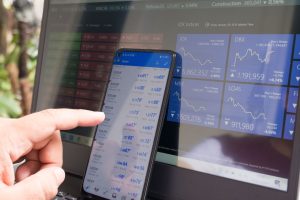Forex robots, also known as expert advisors (EAs), are automated trading systems that enable traders to trade the forex market without any human intervention. These robots are designed to analyze the market, identify trading opportunities, and execute trades automatically. Setting up a forex robot involves several steps, and in this article, we will explore the process in detail.
Step 1: Choosing a Forex Robot
The first step in setting up a forex robot is to choose a robot that suits your trading style and preferences. There are many forex robots available in the market, and each one has its unique features and capabilities. Some robots are designed for scalping, while others are more suitable for long-term trading. You should consider factors such as the robot’s performance history, risk management features, and ease of use before choosing a robot.
Step 2: Installing the Forex Robot
Once you have chosen a forex robot, the next step is to install it on your trading platform. Most forex robots are compatible with the MetaTrader 4 or MetaTrader 5 platform, which is the most popular platform used by forex traders. You can download the robot from the developer’s website and then install it on your trading platform by following the instructions provided.
Step 3: Setting up the Robot Parameters
After installing the forex robot, you need to set up its parameters to match your trading preferences. The parameters include the lot size, stop loss, take profit, and other trading settings that determine how the robot trades. You should carefully review each parameter and adjust them according to your trading strategy and risk tolerance.
Step 4: Backtesting the Forex Robot
Before using the forex robot in live trading, it is essential to backtest it to ensure it performs as expected. Backtesting involves simulating the robot’s performance using historical market data. This enables you to evaluate the robot’s performance and identify any weaknesses or areas for improvement. You can use the backtesting feature on your trading platform to test the robot’s performance.
Step 5: Optimizing the Forex Robot
After backtesting the forex robot, you may need to optimize it to improve its performance. Optimization involves adjusting the robot’s parameters to improve its profitability and reduce its risk. You can use the optimization feature on your trading platform to test different parameter combinations and find the best settings for the robot.
Step 6: Running the Forex Robot in Live Trading
Once you have completed the above steps, you can start running the forex robot in live trading. It is essential to monitor the robot’s performance and make adjustments as necessary. You should also ensure that the robot’s risk management features are in place to minimize the risk of losses.
Conclusion
Setting up a forex robot can be a complex process, but by following the above steps, you can ensure that your robot is optimized for profitability and risk management. It is important to choose a robot that suits your trading style and preferences, and to test it thoroughly before using it in live trading. With the right forex robot and proper setup, you can automate your trading and potentially increase your profits.






